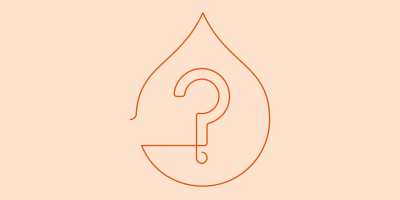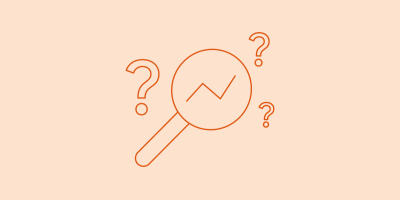How to Use a Customer Data Platform (CDP) for Personalization
Collection :
Personalization has progressed far beyond inserting names into email or SMS greetings — think |*FIRST NAME*|. It’s such a pivotal part of marketing that collecting and using data to build increasingly targeted customer experiences is par for the course. That’s because when you’re vying for attention and business in a crowded space, it’s imperative that curious folks feel like you’re talking directly to them. And it doesn’t stop there: You have to provide value, too.
Using a customer data platform (CDP) for personalization is the ideal way to achieve that — better than using a CRM or DMP.
The Importance of Personalization
It shouldn’t shock you that 80% of consumers are more likely to purchase from an organization that uses personalization. People want to feel special, and they want something that makes their lives easier. From end-to-end, personalization is pivotal to producing that experience.
Consider the basis of marketing: to get into peoples’ heads. Figure out how they tick, what they want, what their pains are, and how to solve their problems. Then it’s your job to link those things to your products. If you do that well, the rest flows naturally.
But it’s up to you to create that flow and the steps leading up to it. This, of course, will look a little different from person to person. Hence, the tired industry adage that marketing isn’t one-size-fits-all.
Neither is customer experience.
As markets have grown more competitive and saturated, consumers have a wider pool of products, services, and experiences to choose from. So, personalization has become a competitive edge, allowing you to build experiences so tailored to each consumer that they feel you’ve solved a problem they didn’t even know they had. It’s like you’re speaking to them individually.
The first organization to tell the most well crafted, personalized narrative ultimately wins. That’s why personalization is important; it communicates your level of care to potential customers and illuminates their previously unsurfaced need for your product or service.
Let’s explore how a CDP does this.
Examples of Using CDP for Personalization
When there are billions of people searching for products and services among millions of retailers, businesses, and organizations peddling their wares, there’s a massive pool of data in the ether. And data doesn’t do much good just floating chaotically.
A customer data platform is the key to organizing and using consumer data to create better personalized experiences. Tangible results of good data use include:
- Better targeted messaging, advertisements, promotions, and product suggestions
- Well-rounded customer profiles that inform improved customer journey mapping
- Smoother, more consistent buying experiences that encourage repeat purchases
- Self-help content tailored to previous purchases
- Learning content that matches customer search queries
The list of possibilities runs as deep as your data creativity, but let’s dig into common ways that organizations use a CDP for personalization IRL.
Making Communication More Personal
Perhaps the most obvious reason to personalize your communications is that it’s your first touchpoint with potential customers. And a CDP can help you create initial interactions well beyond boilerplate first touches.
In fact, one of the most powerful uses of a CDP for personalization is collecting first-party data and developing individual customer data profiles. With those profiles, your organization can tailor specific messaging that matches customer needs and guides them to solutions.
In that sense, a CDP takes the guesswork out of making communication more personal. You know more about an individual based on their data portrait and can use that information to build hyper-specific interactions that will actually help customers.
A CDP takes you from speaking to the masses to speaking to the person. And the more data you glean from your customers’ interactions, the more personal that conversation can become. Like I said earlier — people like to feel special.
Personalizing the E-commerce Experience
We’re living in a material world, and we’re all just material girls. To prove Madonna’s point, in 2020, 80% of consumers across the globe reported shopping online. Indeed, the coronavirus pandemic pushed more shoppers online, where they’ve happily stayed.
Personalization sets their buying experience apart, particularly in e-commerce. Using a CDP for personalization can help by creating unified customer profiles based on data they’ve willingly shared and creating custom experiences based on previous behaviors.
Amazon’s really good at this. A little while ago, I needed a coffee maker. I popped “coffee makers” in the search bar and set the filters for a couple of different reputable brands and adjusted a desired price range. After some browsing, I picked one and bought it. Easy.
Using my freely offered and stored customer data, Amazon tailored the products it suggested based on my purchase. I soon saw recommendations for coffee grinders from the same brand as the coffee maker, then coffee accessories. It got to the point that I could’ve opened my own coffee bar with Amazon’s recommendations — all from data derived from my purchase and search entries.
You can use this example and apply it to any e-commerce experience. The fact remains that customer data organized and stored in a CDP can be better used to create a finely tailored e-commerce experience, making online shopping even easier than it already is.
Prioritizing Privacy
Salesforce reports that 71% of customers say they're more likely to trust a company with personal data if it's use is clearly explained. Pretty fair. There have been enough data-breach horror stories in the last 20 years to give even the most trusting folks pause when it comes to their data bopping around the web.
A crucial part of using personalization to enhance customer experience is making sure that customer data is secure. You’re protecting them, and you’re protecting yourself. So, how does a CDP protect customer data?
We’ve talked about unified customer data profiles already, and the longer a CDP has collected data on an individual, the richer those profiles become. Furthermore, because a CDP works largely with first-party data, the customer profile only consists of data freely given.
A CDP can also act as a centralized customer data command center. Without that central location, it’s much more likely for data transmitted between disparate systems to slip through the cracks and risk exposure, loss, and theft. Storing it in one secure location, a CDP has privacy and data security top of mind, right out of the box.
What’s Next?
Personalization is the present and future of successful marketing. People are inundated with choices and have come to expect organizations to make the effort to get to know them. A successfully implemented CDP has the power to ensure customer data privacy and make communication more personal by tailoring the learning and purchasing experience.
When you use a CDP for customer data storage, you have a world of options. With accurate, holistic customer profiles, you can make marketing decisions based on hard data. What’s more, as that well of data gets deeper, those decisions can evolve with customer behaviors, and all of it stays secure.
But don’t let me ramble on. You can see this magic for yourself. Get in touch, and we’ll show you how Acquia CDP can boost your personalization game to the next level.



